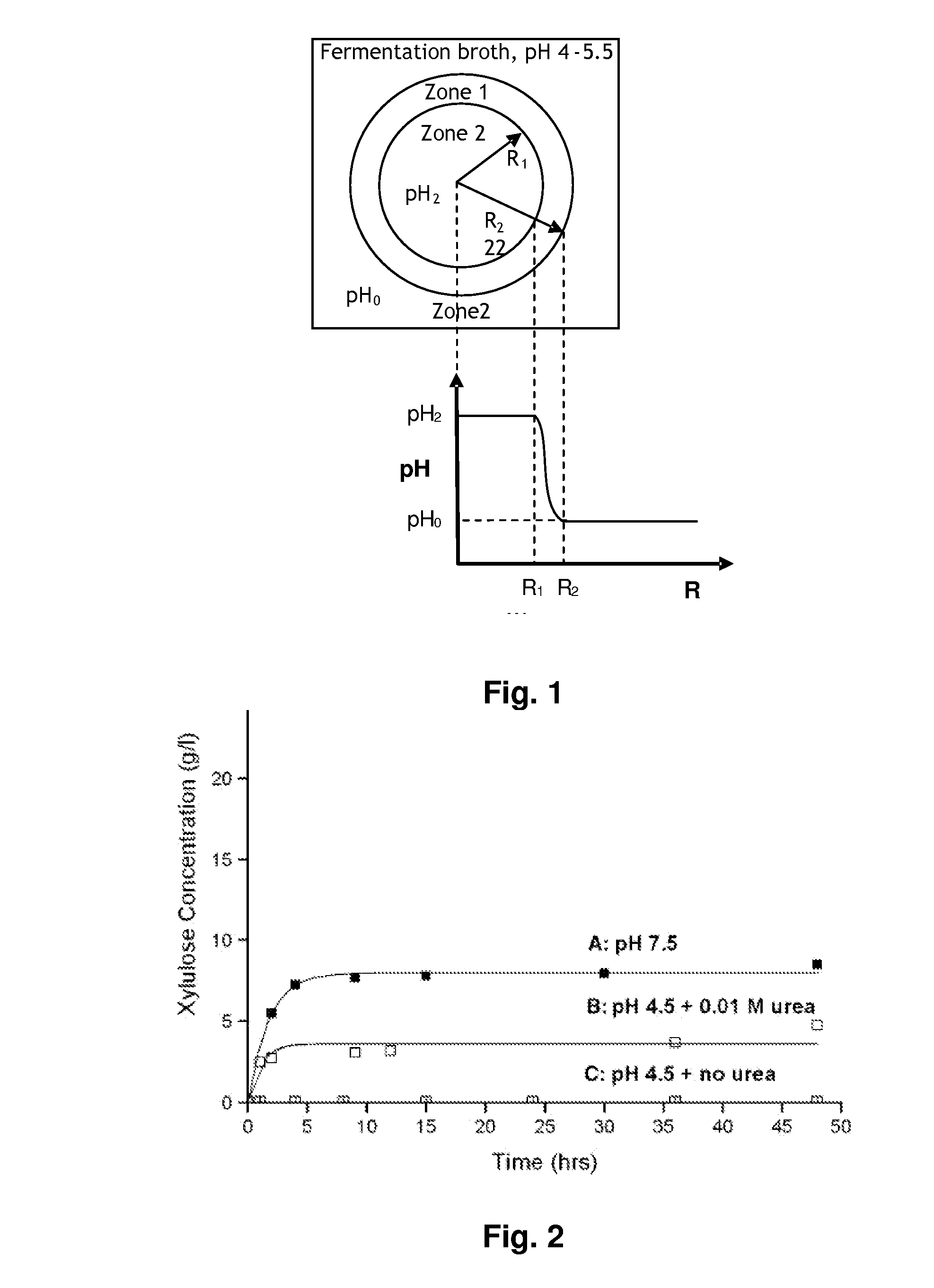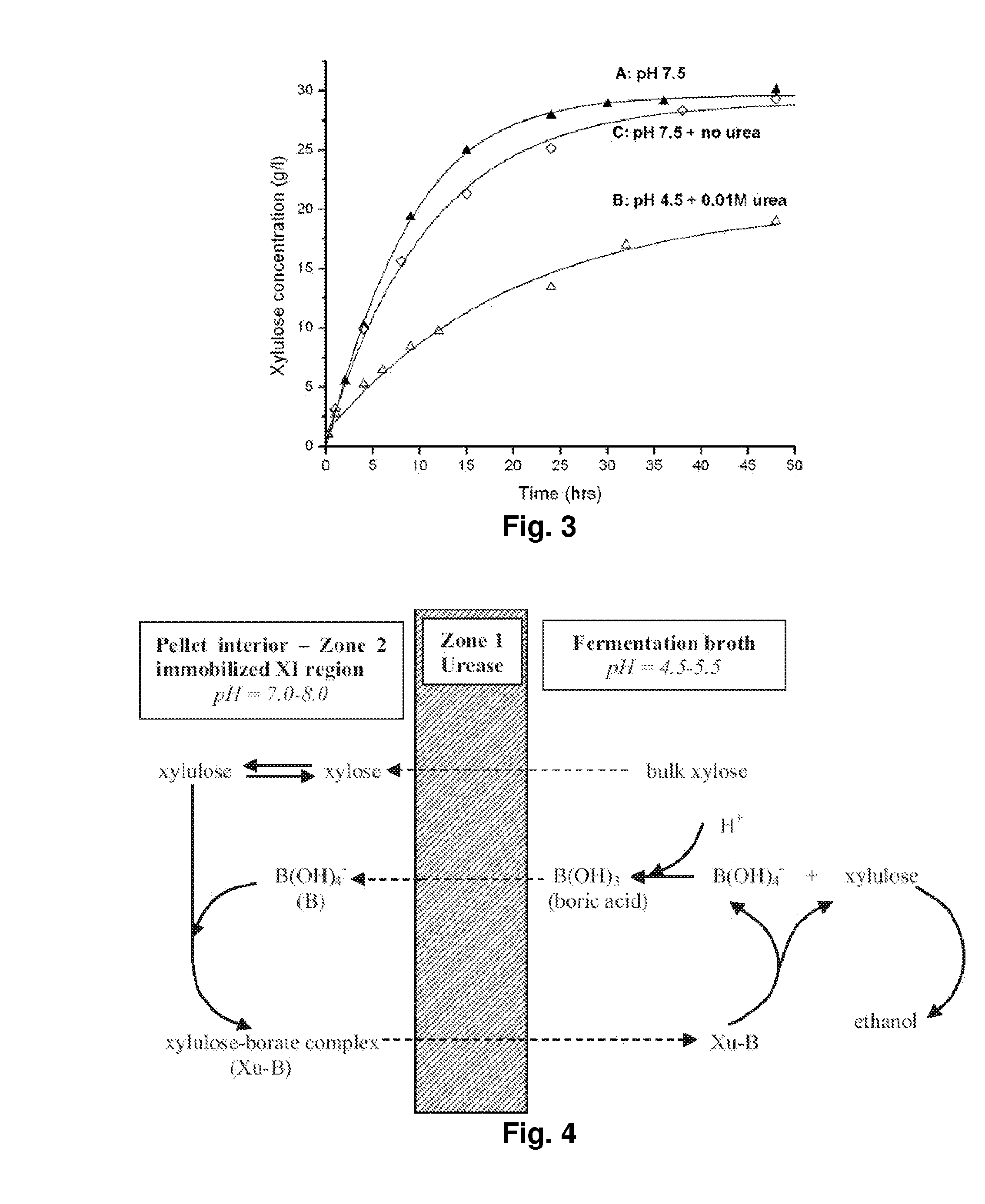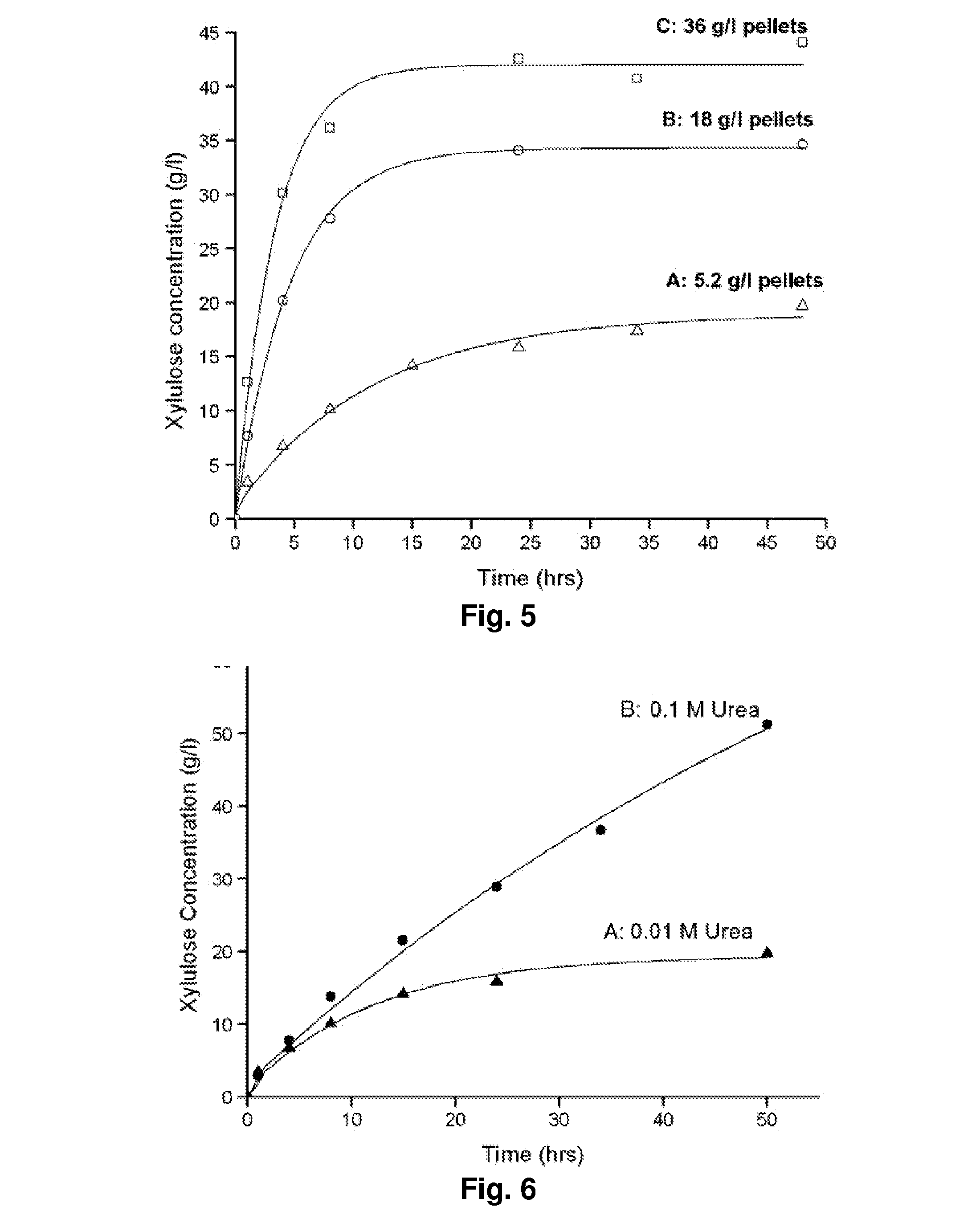Methods for Fermentation of Xylose and Hexose Sugars
a technology of xylose and hexose sugar, which is applied in the field of fermentation methods, can solve the problems of unknown native (or wild type) microorganisms to efficiently ferment both glucose and xylose to ethanol, and unproven ability to survive under industrial fermentation conditions, etc., and achieves significant cost savings in consumables, easy scale-up, and easy concentration
- Summary
- Abstract
- Description
- Claims
- Application Information
AI Technical Summary
Benefits of technology
Problems solved by technology
Method used
Image
Examples
examples
Materials and Methods
[0069]Chemicals: Novo Sweetzyme™ (Sigma Aldrich G4166, ≧350 U / g with activity based on isomerization of glucose to fructose), which is immobilized glucose isomerase produced from Streptomyces murinus, and Genencor GenSweet™ IGI (220 U / g with activity based on isomerization of glucose to fructose), which is immobilized glucose isomerase produced from Streptomyces rubiginosus was used for the isomerization of xylose. The immobilized glucose isomerase has optimal activity for glucose / fructose isomerization at pH 7.5-7.8 and 54-60° C. (as per the manufacturer). The Sweetzyme™ or GenSweet™ pellets were dry, brown, cylinder-shaped granules with a diameter of approximately 1-3 mm. Jack bean urease (Sigma U4002, 70,400 U / g) was used for generating the co-immobilized enzyme pellets used in the isomerization studies. Urease has optimal activity at pH 7.0 and 25° C. (as per manufacturer). Both enzymes were stored at 4° C. Additional chemicals, including xylose, urea, borax...
PUM
| Property | Measurement | Unit |
|---|---|---|
| pH | aaaaa | aaaaa |
| temperature | aaaaa | aaaaa |
| pH | aaaaa | aaaaa |
Abstract
Description
Claims
Application Information
 Login to View More
Login to View More - R&D
- Intellectual Property
- Life Sciences
- Materials
- Tech Scout
- Unparalleled Data Quality
- Higher Quality Content
- 60% Fewer Hallucinations
Browse by: Latest US Patents, China's latest patents, Technical Efficacy Thesaurus, Application Domain, Technology Topic, Popular Technical Reports.
© 2025 PatSnap. All rights reserved.Legal|Privacy policy|Modern Slavery Act Transparency Statement|Sitemap|About US| Contact US: help@patsnap.com



